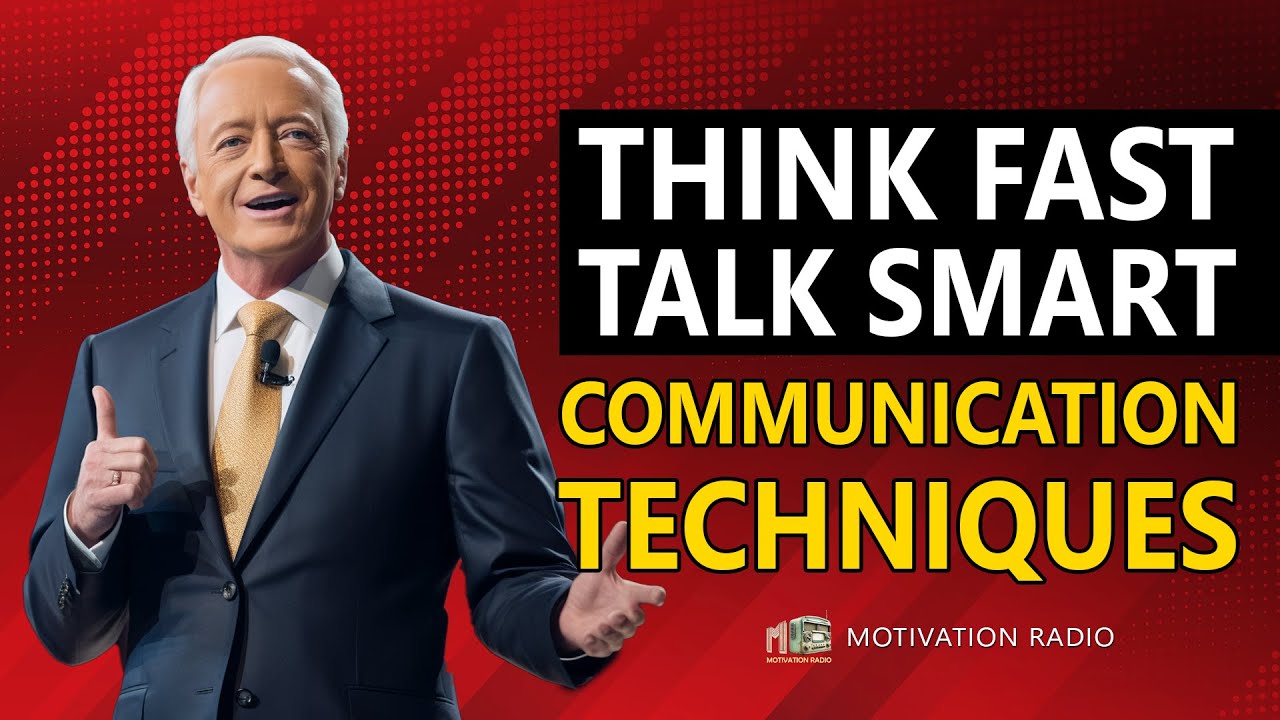B3L7 課文動畫(英文字幕版)(Bodies Speak Louder Than Words)
Summary
TLDRLesson Seven explores the theory that spoken words constitute only 7% of emotional communication, with body language accounting for 55%. Dr. Albert Mehrabian's research suggests that body language is crucial for interpreting true feelings and detecting lies, as indicated by stiff movements, self-touching, and eye direction. In romantic contexts, body language subconsciously signals attraction through prolonged gazes, mimicking actions, and directional cues. Understanding these non-verbal cues enhances meaningful human interaction.
Takeaways
- 🗣️ Dr. Albert Mehrabian's theory suggests that only 7% of communication involving emotions is through spoken words.
- 🤔 55% of emotional communication is achieved through body language, which often reflects true feelings and thoughts.
- 🕵️♂️ Reading body language is crucial for interpreting messages and determining truthfulness.
- 🚫 When lying, people tend to make stiff body movements, touch or scratch themselves, and exhibit limited arm and hand gestures.
- 👀 Liars often unconsciously touch their face, neck, or behind their ears, and may rub their eyes.
- 👉 Eye movements can indicate deception; right-handed people tend to look left when lying, and right when telling the truth.
- ❤️ In romantic contexts, body language subconsciously signals attraction, such as prolonged eye contact and mirroring behaviors.
- 👣 People may unconsciously point their feet and shoulders towards someone they are attracted to and stand closer to them.
- 🤝 Understanding body language can enhance meaningful interactions and improve communication without the need for words.
Q & A
What percentage of communication involving emotions is attributed to spoken words according to Dr. Albert Mehrabian?
-According to Dr. Albert Mehrabian, spoken words account for only about 7% of communication involving emotions.
How much of our emotional communication is achieved through body language, as suggested by Dr. Mehrabian's studies?
-Dr. Mehrabian's studies suggest that we achieve about 55% of our emotional communication through our bodies.
What are the typical body language signs that indicate someone might be lying?
-When people are lying, they often exhibit stiff body movements, touch or scratch themselves, and make unusual eye movements.
How do liars' arm and hand gestures differ from those of someone who is telling the truth?
-Liars tend to make fewer arm and hand gestures, and when they do, their movements are usually stiff and their hands stay close to the body rather than moving outward.
What is a common facial or neck action that can indicate someone is not being truthful?
-Liars often can't help but touch or scratch their faces, necks, or behind their ears, sometimes rubbing their eyes without being conscious of it.
How does eye movement differ when right-handed people are telling the truth versus when they are lying?
-When right-handed people tell the truth, their eyes move to their left, but when they are lying or being creative with the truth, their eyes tend to drift toward their right.
What is the reverse eye movement tendency for left-handed people when they are truthful or lying?
-For left-handed people, the reverse is true; their eyes move to the right when telling the truth and to the left when lying or being creative with the truth.
How does body language indicate romantic feelings towards someone?
-In romantic situations, people's bodies subconsciously provide indications such as glancing, looking away, and then looking back for a longer period, tracking or repeating the other person's actions, and pointing their feet and shoulders towards the person they are attracted to.
What is the significance of pointing feet and shoulders towards someone in the context of body language?
-Pointing feet and shoulders towards someone indicates a subconscious attraction or interest in that person.
What is the overall benefit of understanding body language in our interactions with others?
-Understanding body language allows us to interpret people's thoughts and emotions more accurately, enabling more meaningful interactions without the need for verbal communication.
Outlines

このセクションは有料ユーザー限定です。 アクセスするには、アップグレードをお願いします。
今すぐアップグレードMindmap

このセクションは有料ユーザー限定です。 アクセスするには、アップグレードをお願いします。
今すぐアップグレードKeywords

このセクションは有料ユーザー限定です。 アクセスするには、アップグレードをお願いします。
今すぐアップグレードHighlights

このセクションは有料ユーザー限定です。 アクセスするには、アップグレードをお願いします。
今すぐアップグレードTranscripts

このセクションは有料ユーザー限定です。 アクセスするには、アップグレードをお願いします。
今すぐアップグレード関連動画をさらに表示

Travailler sa posture - Prépa Grand oral du bac

Brian Tracy Best Advice on Mastering The Art Of Effective COMMUNICATION | How Successful People Talk

7 body language tips to impress at your next job interview

100 Most Common English Words (Pronunciation & Example Sentence)

The power of nonverbal communication with body language expert Linda Clemons

The Words Matter | Free Sales Training Program | Sales School
5.0 / 5 (0 votes)
